Answer to questions at the regular press conference in May
On May 29, the Ministry of Ecology and Environment held a regular press conference for May. Zhang Yujun, Director of the Natural Ecological Protection Department of the Ministry of Ecology and Environment, attended the press conference and introduced the situation of biodiversity protection and ecological protection supervision. Pei Xiaofei, spokesperson of the Ministry of Ecology and Environment, presided over the press conference and jointly answered questions from reporters.
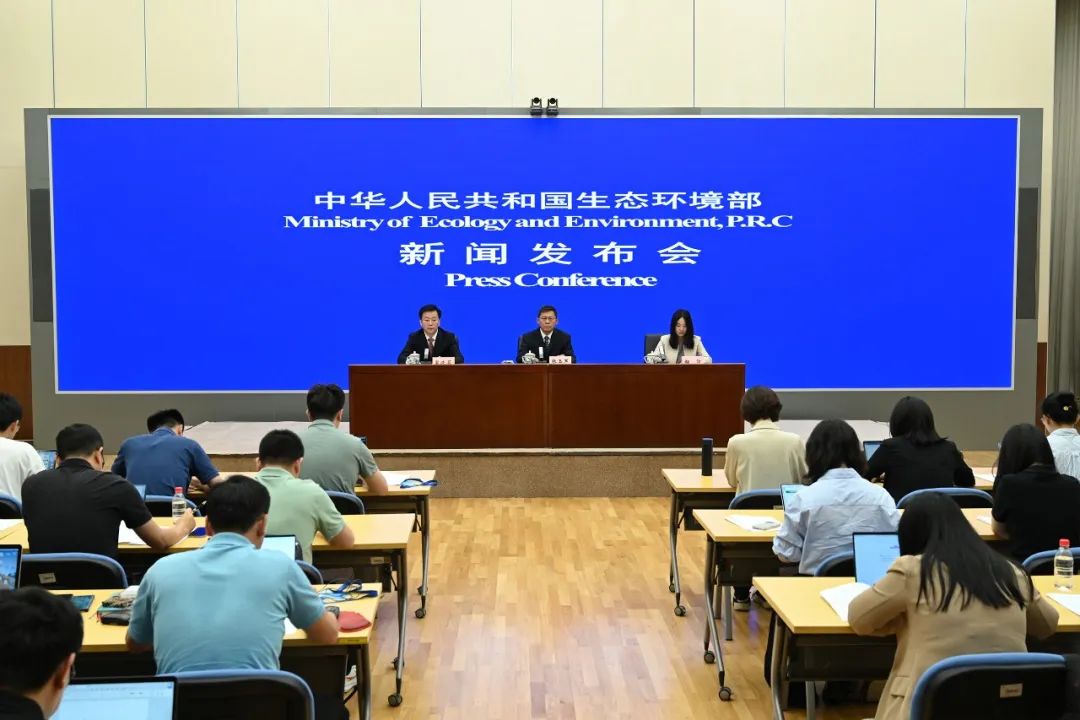
press conference site
Introduce the relevant situation of biodiversity protection and ecological protection supervision
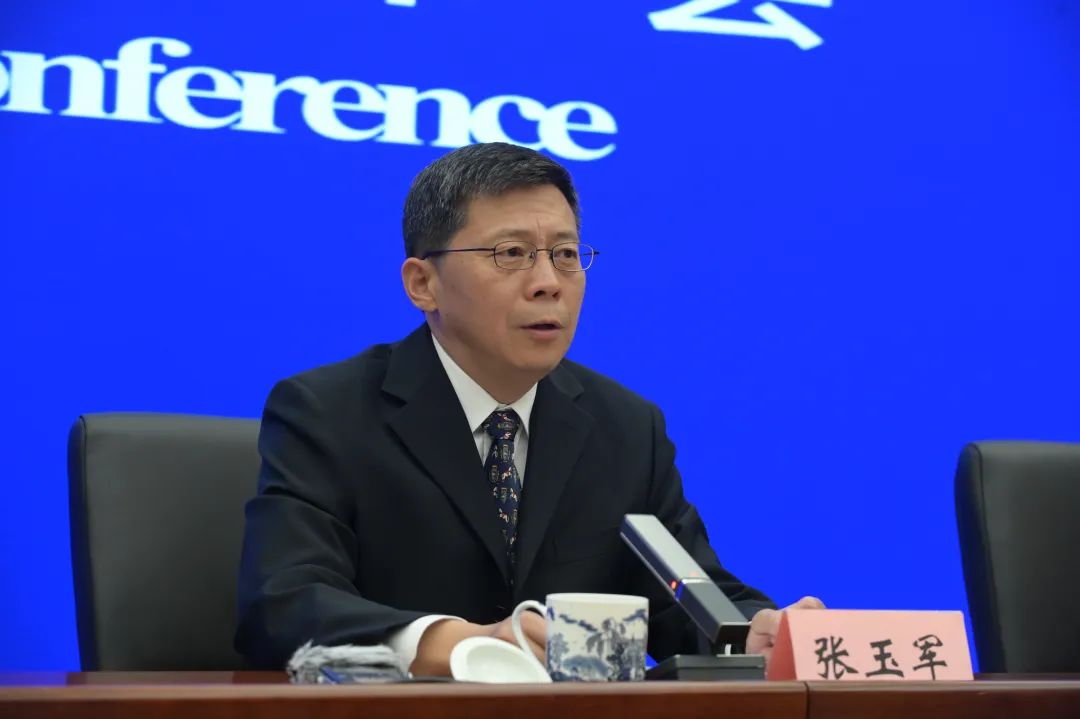
Zhang Yujun, Director of the Department of Natural Ecological Protection
Zhang Yujun:In July last year, the Party Central Committee held the National Ecological and Environmental Protection Conference again after five years. General Secretary Xi Jinping attended the meeting and delivered an important speech, emphasizing that "it is necessary to strengthen unified supervision on ecological protection and restoration and strengthen the construction of ecological protection and restoration supervision systems." In the past year, the Ministry of Ecology and Environment has thoroughly implemented the spirit of the 20th National Congress of the Communist Party of China and the National Ecological and Environmental Protection Conference, effectively performed its responsibility of "guiding, coordinating and supervising ecological protection and restoration work", and achieved positive results.
The first is to comprehensively promote biodiversity protection. Actively implement the "Opinions on Further Strengthening Biodiversity Conservation" of the Office of the CPC Central Committee and the State Council and the "Kunming-Montreal Global Biodiversity Framework", and issued the "China Biodiversity Conservation Strategy and Action Plan (2023-2030)". The formal signing of the Kunming Biodiversity Fund Cooperation Agreement marks the official launch of the Kunming Fund initiated by the Chinese government. It will contribute to promoting the successful implementation of the "Kunming Framework" and accelerating the global biodiversity governance process.
The second is to steadily carry out surveys and assessments of ecological conditions. Our Ministry, together with the Chinese Academy of Sciences, completed the survey and evaluation of changes in national ecological conditions from 2015 to 2020 and released the results, comprehensively and systematically grasped the ecological conditions and changes in the country and major national strategic areas such as the Yellow River Basin, the Yangtze River Economic Belt, and the Beijing-Tianjin-Hebei region in the past five years. Promote the evaluation of the effectiveness of protection of natural reserves and ecological protection red lines in an orderly manner, and provide strong support for ecological and environmental supervision in important ecological spaces.
The third is to increase the investigation and punishment of ecological damage in important ecological spaces. Strengthen the construction of ecological protection red line supervision platform, carry out bimonthly remote sensing monitoring of human activities in natural protected areas and ecological protection red lines, continue to promote the strengthened supervision of the "Green Shield" nature protected areas, increase ecological supervision in Qinling Mountains and desertified areas, and establish a "monitoring discovery-Transfer, investigation, supervision, rectification, and reimbursement" normalized supervision working mechanism has achieved closed-loop management of ecological damage problems and basically reversed the trend of encroaching and damaging important ecological spaces.
The fourth is to further promote the demonstration and creation of ecological civilization. The construction indicators and management procedures were revised, and a number of ecological civilization construction demonstration areas and "lucid waters and lush mountains are invaluable assets" practical and innovative bases were newly selected and named to promote the continuous upgrading of the creation work. At the same time, daily supervision of the named areas was strengthened. Ensure the quality and effectiveness of ecological civilization demonstration creation.
The fifth is to continue to promote the construction of ecological protection and restoration regulatory regulations, standards and systems. Actively cooperate with the Legal Affairs Committee of the National People's Congress to carry out the compilation of the Ecological Environment Code, promote the formulation and revision of the National Park Law, issue the "Working Mechanism for Handling and Disposal of Clues on Ecological Damage Issues on the Red Line of Ecological Protection in Natural Reserves (Trial)", and issue ecological status assessments and effectiveness Assessment of relevant standards and specifications to further promote the standardization and institutionalization of supervision work.
In addition, just last week, from May 20 to 21, our Ministry held a national natural ecological protection work conference. The meeting comprehensively summarized the remarkable results achieved in ecological protection supervision over the past five years of institutional reform, in-depth analysis of the new situation and new requirements currently facing, clarified the methods and paths for ecological protection and restoration supervision in the new era, and deployed key tasks.
In the next step, we will be guided by Xi Jinping Thought on Ecological Civilization, continuously increase ecological protection and restoration supervision, and build a solid ecological foundation for beautiful China in which man and nature coexist harmoniously.
Thank you all!
answered questions
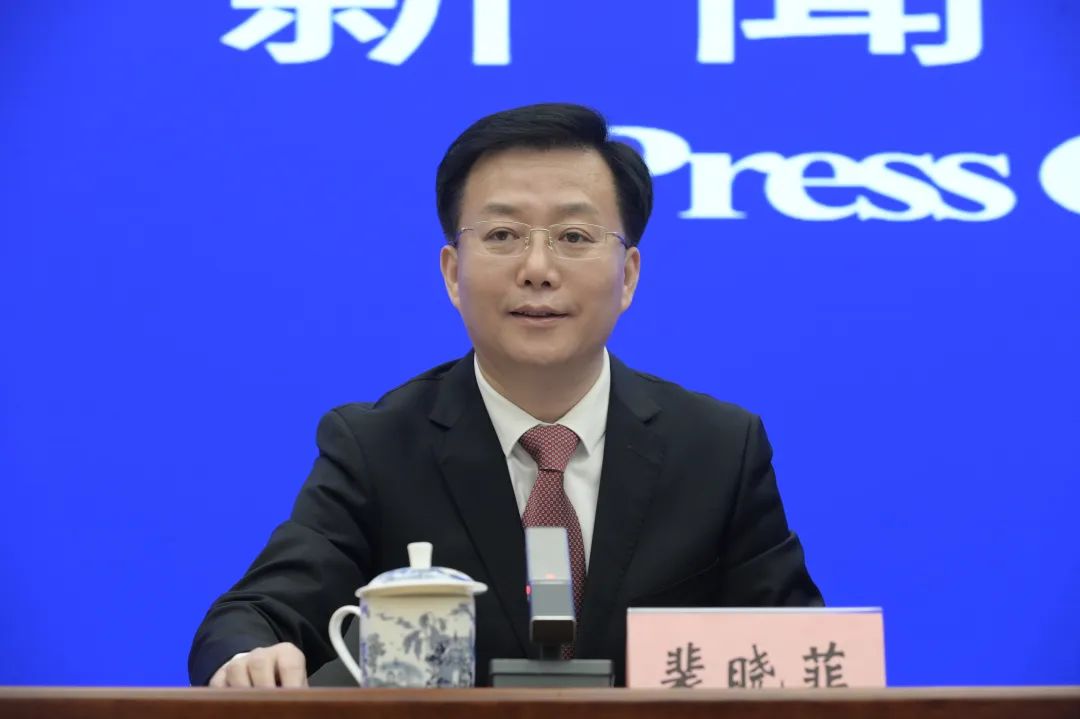
Pei Xiaofei, Director of the Propaganda and Education Department of the Ministry of Ecology and Environment and Spokesperson
Pei Xiaofei:The following is the questioning session. The questioning session of this month's press conference is divided into two sessions: theme questions and answers and hot questions and answers. Among them, in the theme question and answer session, Director Zhang Yujun answers questions such as biodiversity protection and ecological protection supervision that everyone cares about; in the hot question and answer session, I answer hot questions that everyone cares about.
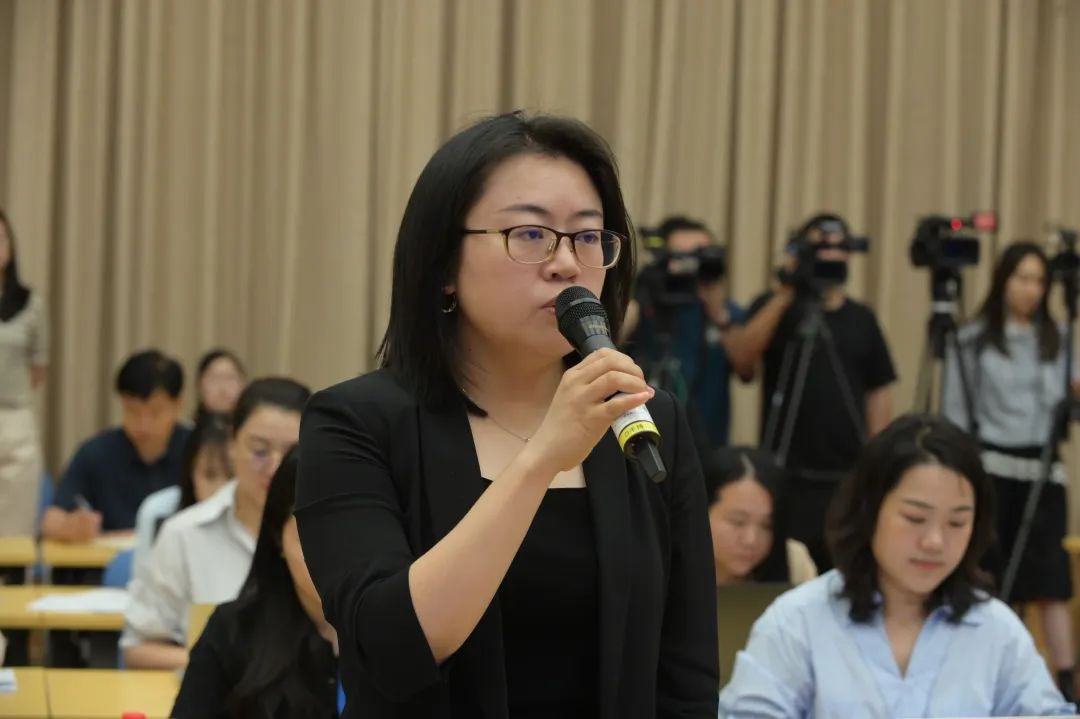
The Paper Reporter: As the chairman of COP15, my country announced that it will take the lead in investing 1.5 billion yuan to establish the Kunming Biodiversity Fund. The first batch of projects of the fund will be implemented before COP16. I would like to ask how the preparations for the launch of the fund are progressing? What are the selection criteria and process for the first batch of projects? How to mobilize more forces to strengthen investment in biodiversity conservation funds? Thank you.
Zhang Yujun:Thank you for your question.
As the chairman of the 15th Conference of the Parties (COP15) to the Convention on Biological Diversity, China successfully led the conclusion of the landmark outcome document of the "Kunming-Montreal Global Biodiversity Framework". At the same time, in order to promote the global biodiversity conservation process, President Xi Jinping officially announced in October 2021 that China will take the lead in investing 1.5 billion yuan to establish the Kunming Biodiversity Fund to support biodiversity conservation in developing countries.
After more than two years of careful preparation, just yesterday morning, the Ministry of Ecology and Environment signed relevant cooperation agreements with the United Nations Environment Program and the United Nations Multilateral Trust Fund Office in Beijing, marking the official launch of the fund. It should be said that the establishment and official launch of the fund are of great significance, mainly reflected in three aspects:
First, it has widespread global influence. Biodiversity is related to the well-being of all people, and biodiversity loss is a serious challenge currently facing mankind. Just as at yesterday's signing ceremony, Ms. Anderson, Executive Director of the United Nations Environment Program, spoke and said that global biodiversity is currently declining sharply, thousands of species are facing survival threats, forests are declining, and coral reefs are dying out, which puts mankind in real danger. It is hoped that the establishment of the Kunming Fund will be like dropping a stone on calm water, which will cause ripples and bring greater attention and more financial support to the cause of biodiversity from all parties around the world. In this regard, Amina, Deputy Secretary-General of the United Nations, also said in a video speech yesterday that the Kunming Fund will be expected to become a catalyst for countries, companies and institutions to invest in biodiversity, making the global economy more sustainable, fair, just and resilient.
The second is to reflect the responsibility of the Chinese government. As the largest developing country in the world, China has a very arduous task of developing its economy and improving people's livelihood. However, we still fulfill our commitments with the greatest determination and the most positive attitude. While overcoming our own development difficulties, we have invested within our capabilities to establish the Kunming Fund and officially launched the operation to help other developing countries protect biodiversity, demonstrating China's responsibility and responsibility as a responsible big country that will keep its word and act, and promote the construction of a community with a shared future for mankind.
Third, it has a prominent practical leading role. The theme of this year's May 22 International Biodiversity Day is "Biodiversity You and I Participate Together". The launch of the Kunming Fund is a practical example of leading countries to actively participate in biodiversity conservation. The Kunming Fund will adhere to multilateralism and international operations, and provide financial, technical and capacity support for developing countries to implement the "Kunming Framework" mainly through free aid. The implementation of the Kunming Fund will make tangible contributions to the achievement of the long-term goals and action goals of the "Kunming Framework", especially the restoration and protection of global ecosystems, mainstreaming of biodiversity, sustainable use of biodiversity, and the benefits of genetic resources and their digital sequence information. Benefit sharing, foreign invasion prevention and control and other key achievements.
The fund will operate and manage in accordance with international rules and strive to implement the first batch of projects before COP16. We will improve and make public the application and approval process as soon as possible to ensure that the fund is used openly, transparently and efficiently under international rules.
Here, we also welcome more countries, institutions and organizations to donate funds to the Kunming Biodiversity Fund, and we also welcome developing countries to put forward project needs and work together to achieve the goals of the "Kunming Framework".
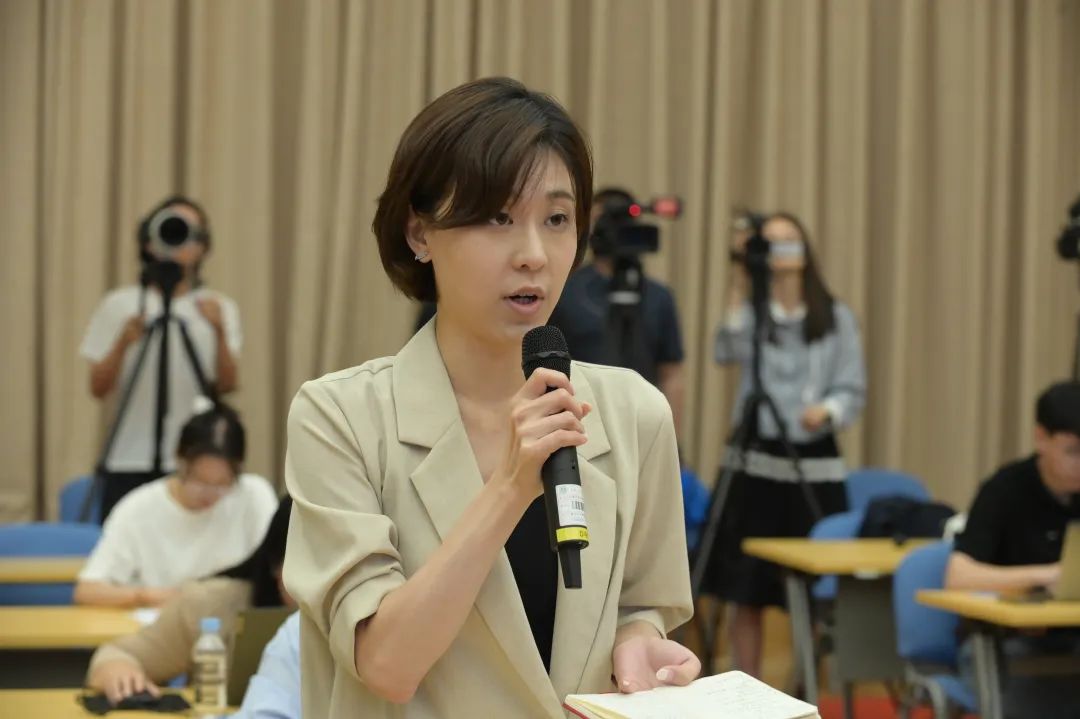
CCTV reporter: The "Opinions on Comprehensively Promoting the Construction of a Beautiful China" proposes to strengthen the construction of ecological protection and restoration supervision systems and strengthen unified supervision. Strictly supervise owners, developers and regulators, and promptly discover and investigate various ecological damage incidents. May I ask the Ministry of Ecology and Environment how to implement it? What are the main ideas for strengthening ecological protection supervision? What is the current progress and effectiveness? Thank you.
Zhang Yujun:Strengthening ecological protection and restoration supervision is an important foundation for achieving high-quality development and an inevitable requirement for building a beautiful China. In recent years, under the scientific guidance of Xi Jinping Thought on Ecological Civilization, the Ministry of Ecology and Environment has effectively fulfilled its responsibilities of ecological protection and restoration supervision, adhered to the "four unifications" of policy, regulation and standard formulation, monitoring and evaluation, supervision and law enforcement, and inspection accountability, and initially established ecological protection Restoration supervision system. An ecological status investigation and evaluation mechanism has been formed that "every five years across the country and a number of key areas every year", and ecological environment effectiveness assessments have been carried out for major ecological restoration projects. Give full play to the role of the central ecological and environmental protection inspector and publicly expose 109 typical cases involving ecological damage. We have continued to carry out strengthened supervision of the "Green Shield" nature reserve, and more than 5000 key ecological damage problems have been discovered and investigated. The completion rate of rectification of key issues in national nature reserves has reached 99.1%, achieving a significant "double decline" in the amount and area of human interference., basically reversing the trend of encroaching on and destroying the ecological environment of nature reserves. An ecological protection red line supervision platform has been established to continuously improve remote sensing monitoring capabilities to proactively detect man-made sabotage activities.
In order to further clarify the ideas for ecological protection and restoration supervision, just last week, we held a national natural ecological protection work conference. The meeting further clarified the supervision of ecological protection and restoration, first of all, the institutional arrangements for external supervision in key areas. In recent years, the emergence of ecological damage problems such as the Qilian Mountains and Qinling Mountains has highlighted the necessity and urgency of implementing external supervision in this important field of ecology. The ecological environment department stands at the perspective of maintaining national ecological security, performs external supervision functions on ecological protection and restoration, and supervises whether owners, developers and even regulators of natural resources fulfill their ecological protection and restoration responsibilities in place. Secondly, ecological supervision is the supervision of the public welfare attributes of natural resources. Natural resources have both economic attributes and ecological public welfare attributes. The ecological environment department is a supervision that represents the public welfare attribute of ecology, focusing on supervising the service functions of natural ecology and assessing whether the diversity, stability, and sustainability of ecosystems have been improved on a regional scale. Moreover, the supervision of ecological and environmental departments is problem-oriented supervision in terms of methods and methods. The ecological environment department carries out ecological protection and restoration supervision mainly to target problems. Whether it is ecological protection and restoration monitoring, evaluation, or inspection and law enforcement, the purpose is to discover problems, promote rectification, draw inferences from one example, and form a long-term mechanism.
The current and future period is an important period for building a beautiful China. The Ministry of Ecology and Environment will thoroughly implement the spirit of the National Ecological and Environmental Protection Conference, further improve the ecological protection and restoration supervision system, highlight problem orientation, and carry out work around the main line of discovering problems, assigning rectification, supervising law enforcement, and supervising and holding inspections accountable. At the beginning, we should start with discovering problems and carry out monitoring and targeted evaluation of key areas, key areas, and key issues. We must not only make good use of conventional ecological monitoring methods and means, but also make good use of modern remote sensing monitoring methods to continuously improve monitoring and proactively discover problems. ability. Next is to promote the assignment and rectification of problems. It is necessary not only to establish an internal work coordination mechanism for the ecological environment department, but also to strengthen coordination and linkage with departments and local governments to ensure effective assignment of problems and promote rectification in place. Finally, we should strengthen supervision and law enforcement and inspection accountability, give full play to the role of central and provincial ecological and environmental protection inspections, further strengthen the "Green Shield" operation, seriously investigate and deal with ecological damage and strictly hold them accountable, and continuously consolidate the ecological foundation for building a beautiful China.
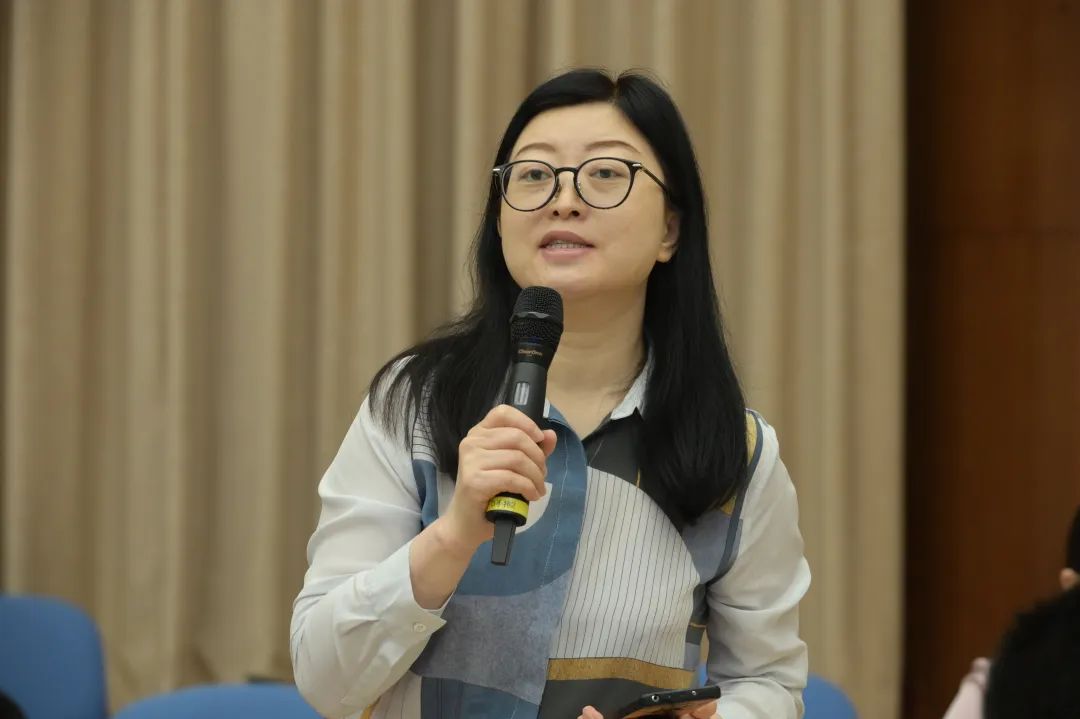
Guangming Daily reporter: At the beginning of this year, the Ministry of Ecology and Environment released and submitted the "China Biodiversity Strategy and Action Plan (2023-2030)" to the Secretariat of the Convention on Biological Diversity. What are the highlights of this plan? In what ways are they consistent with the long-term goals and action goals of the Kunming and Mongolia Framework? How will the Ministry of Ecology and Environment promote the implementation of the plan in the future? Thank you.
Zhang Yujun:Thank you for your question.
The National Biodiversity Strategy and Action Plan is the core tool for parties to implement their obligations. Under the overall leadership of the State Council to strengthen the coordination mechanism for biodiversity protection, the Ministry of Ecology and Environment has worked together with relevant departments to update and revise the strategic action plan. China is the first developing country to complete the update of the strategic action plan after the adoption of the Kunming Framework, providing a global model for the effective implementation of the Kunming Framework at the national level. It further demonstrates China's responsibilities and actions as the chair of COP15.
This update and revision is based on my country's biodiversity protection needs, benchmark the construction of a beautiful China, fully connect with the goals of the "Kunming-Mongolia Framework", propose China's 2030 goals and 2035 goals for biodiversity protection, and focus on four Priority areas. 27 priority actions and 75 priority projects have been deployed. For the first time, priority action goals have been set, quantitative indicators have been added, and China's contribution to all action goals of the "Kun-Mongolia Framework" has been clarified, including the much-watched goals such as protected areas and ecosystem restoration.
The new version of the strategic action plan has been optimized and adjusted from structure to content, from goals to tasks. For the first time, publicity and education, enterprise participation, and national action have been incorporated into the mainstream action areas to build a national action system for biodiversity protection. At the same time, biodiversity should be regarded as the basis, goal and means of sustainable development, and sustainable use of biodiversity should help green and high-quality economic and social development.
In addition, law enforcement supervision, investment and financing, etc. will be listed as priority actions to consolidate basic capabilities for biodiversity protection. In addition, it highlights practical measures with Chinese characteristics such as ecological protection red lines and the realization of the value of ecological products, and contributes Chinese wisdom and Chinese solutions for biodiversity management to the world.
In the next step, the Ministry of Ecology and Environment will also work with relevant departments to prepare the "Implementation Plan for Major Biodiversity Conservation Projects (2024-2030)" to comprehensively promote the implementation of the strategic action plan to curb and reverse the loss of global biodiversity. Make new contributions.
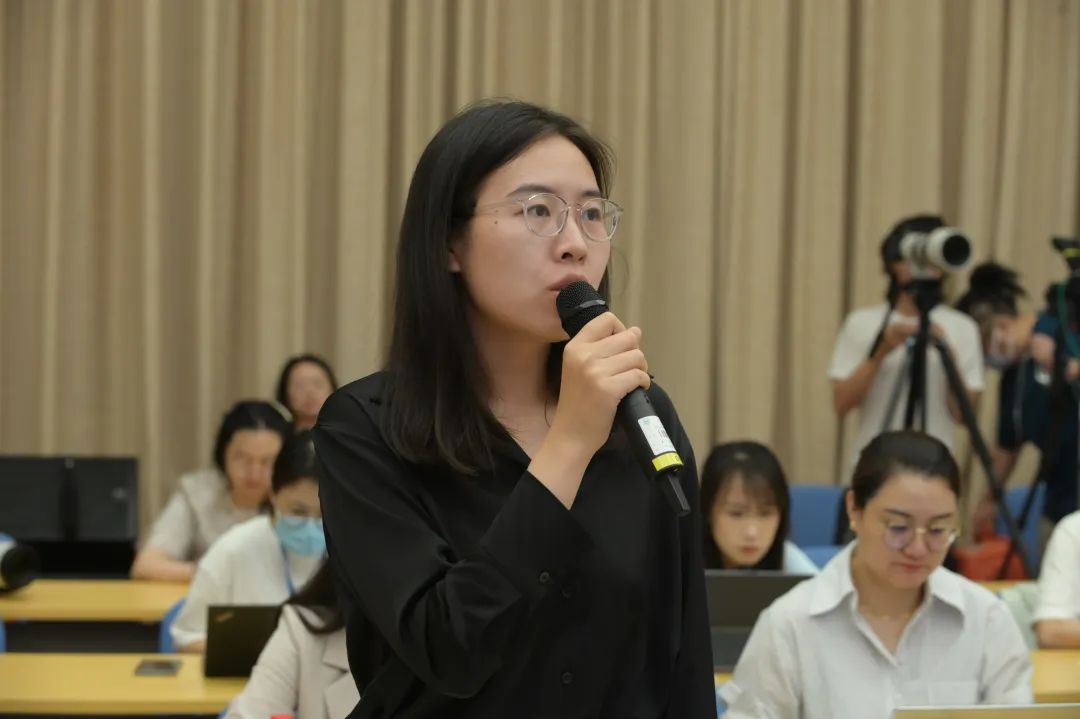
China Youth Daily reporter: In December last year, the Ministry of Ecology and Environment promoted the establishment of a cross-regional ecological protection collaborative cooperation mechanism in the Qinling Mountains. What considerations did the Ministry of Ecology and Environment consider in establishing the Qinling Mountains mechanism? What work will be carried out next, thank you.
Zhang Yujun:Thank you for your question.
The Qinling Mountains are an important ecological security barrier in my country. General Secretary Xi Jinping has repeatedly issued important instructions on ecological protection in the Qinling Mountains. From a realistic perspective. In recent years, the ecological environment of the Qinling Mountains has continued to improve, but problems such as serious soil erosion and ecological degradation still exist, and ecological damage problems such as illegal development occur from time to time. Overall, the main body of the Qinling Mountains is in Shaanxi, but geographically it involves 6 provinces and 1 city including Henan and Hubei. It is necessary to carry out overall protection based on geographical units. For example, the well-known Danjiangkou Reservoir is located at the junction of Hubei and Henan in the Qinling Mountains. However, in fact, 70% of the reservoir's water comes from the Hanjiang and Danjiang in the Shaanxi section of the Qinling Mountains. Therefore, only coordinated protection by multiple provinces can ensure the ecological conservation function of the Qinling Mountains., achieve "one reservoir of clean water can be continuously sent north."
Based on the above considerations, in December last year, our Ministry promoted the establishment of a cross-regional ecological protection coordinated cooperation mechanism in the Qinling Mountains, held the first rotating joint meeting in Xi'an, and guided Shaanxi and other seven provinces and cities to sign cooperation memorandums. The purpose of establishing the "Qinling Mechanism" is to implement regionally linked ecological protection and restoration supervision in terms of strengthening data sharing, consultation and governance, joint investigation, scientific and technological support, and joint publicity, so as to jointly play a "game of chess" for ecological protection in the Qinling Mountains.
Since the establishment of the "Qinling Mechanism", we have mainly carried out the following work: First, we issued key annual tasks for 2024, and clarified the task requirements and joint actions of various provinces. The second is to initially complete the survey and evaluation of the ecological conditions of the Qinling Mountains and grasp the ecological background of the Qinling Mountains. The third is to organize the investigation and handling of ecological damage problems, achieve full coverage of satellite remote sensing monitoring in the Qinling Mountains, issue two batches of suspected problems and organize provinces to carry out on-site verification, and promptly supervise and rectify ecological damage problems.
In the next step, we will further deepen the "Qinling Mechanism" and guide local governments to jointly prepare ecological protection plans for the Qinling Mountains; regularly carry out surveys and assessments of ecological conditions in the Qinling Mountains; build an integrated ecological monitoring system of sky, ground and ground to promote data sharing; and provide information to 6 provinces every two months. One city pushed clues of suspected ecological damage discovered by satellite remote sensing, organized 6 provinces and 1 city to jointly carry out on-site verification and inspection actions to urge rectification of problems; Give full play to the role of the "1+7" overall coordination mechanism, promote the strengthening of cooperation among seven provinces and cities, and help the ecological protection of the Qinling Mountains to a new level.
At the same time, we will also learn from the experience of the "Qinling Mechanism" and gradually explore the establishment of ecological protection coordination mechanisms in key areas of the Yellow River Basin and the Yangtze River Economic Belt, such as the Shanxi-Shaanxi Grand Canyon, the Dongting Lake Poyang Lake, the Chishui River Basin, and the Heihe River Basin. Promote the overall protection of regional ecology.
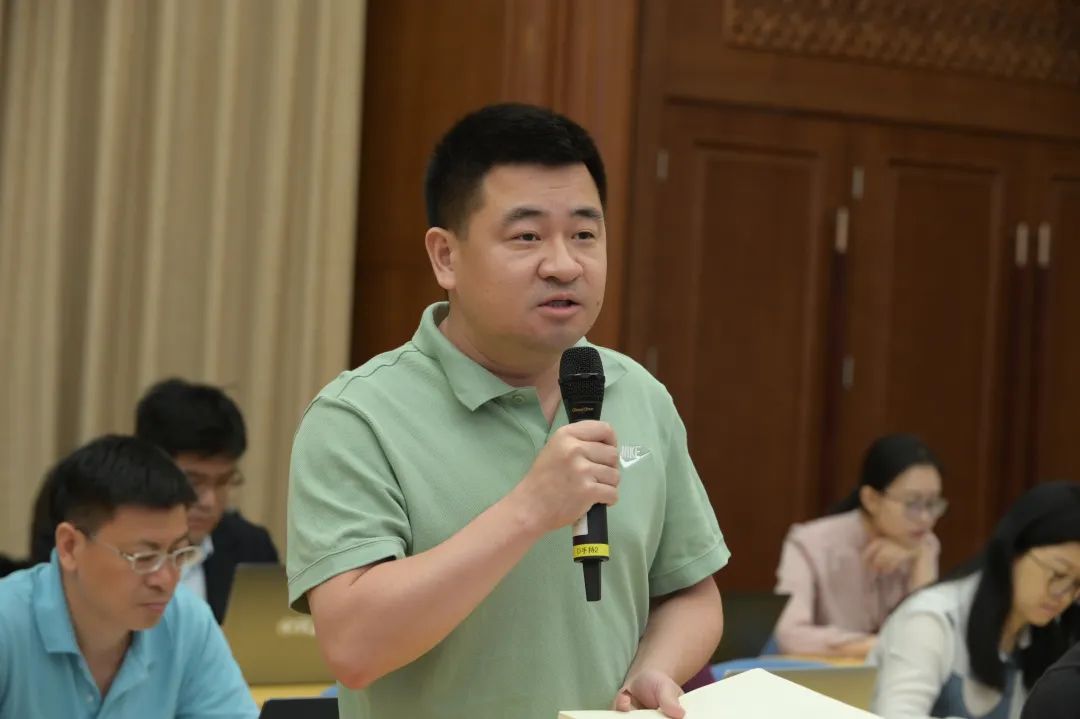
Daily Economic News Reporter: We have noticed that so far, a number of excellent cases of biodiversity protection have emerged in my country. Can you introduce the experience behind these cases? What support measures will the Ministry of Ecology and Environment provide around the biodiversity protection activities carried out in various places? Thank you.
Zhang Yujun:Thank you for your question.
In recent years, we have promptly summarized good experiences and good practices in biodiversity protection in various places and carried out a series of publicity and promotion work. On May 22 this year's International Biodiversity Day, our Ministry organized and carried out the selection of practical results of biodiversity protection and sustainable use, and collected 19 advanced and innovative excellent cases.
In these cases, from the perspective of species protection, measures such as establishing and improving rules and regulations, strengthening supervision and supervision, consolidating the responsibilities of all parties, strengthening scientific research, and encouraging public participation have played a very important role in achieving effective protection of biological resources. For example, the number of gibbons endemic to Hainan has increased from less than 10 in two groups 40 years ago to 37 in six groups by the end of 2022. The overwintering population of red-crowned cranes in Liaohe Estuary has increased from 5 in 2014 to 114 in 2023, the highest in history. Also in the Liaohe Estuary, the breeding population of black-billed gull has increased from 1200 in 1992 to 11357 in 2023, making it one of the most successful cases of endangered species protection.
In terms of sustainable use of biodiversity, a series of measures such as strengthening the conservation and selection of genetic resources, standardizing the management of the environment and production and planting, and tapping ecological potential according to local conditions can effectively promote the realization of the value of ecological products. For example, Zhenning County, Guizhou Province actively explores the planting rules of bee sugar plums and coordinates the protection and utilization of genetic resources and traditional knowledge. At present, the planting area of honey plum in Zhenning County has reached 220,000 acres, with an output value of about 3 billion yuan, driving 15,000 households and 62,000 people to achieve an increase in net income per household by 67,000 yuan.
There is also a case where the 14th Regiment of the Xinjiang Production and Construction Corps has cultivated tilapia, grouper, etc. through the methods of "using fishing to suppress alkali" and "using fishing to change water", achieving double harvests of ecological and economic benefits.
In terms of intelligent monitoring and supervision, a series of measures such as establishing a digital supervision system, rationally setting up monitoring networks and monitoring samples, and developing automatic species identification systems can greatly improve the level of background investigation and monitoring and evaluation of biodiversity. For example, in Lishui, Zhejiang, a digital biodiversity supervision system has been established to automatically generate biodiversity evaluation indices and monitoring reports. In Jiangsu, the country's first highway biodiversity bird observatory was built, and a total of about 680,000 birds were observed in four months. Inner Mongolia took the lead in building a "one-stop, multi-point" biodiversity monitoring network system covering all ecosystems in the region. New technologies have a very obvious role in promoting the improvement of ecological monitoring technology. They have realized the transformation from traditional human observation to technical capture. They can automatically identify the number and types of animals, which is very helpful to improving our work.
These cases are being released one after another in the new government media of our ministry, and we would also like to ask all media friends to help pay attention to and forward them.
In the next step, our Ministry will work with relevant departments to improve the forms of science popularization, publicity and education on biodiversity, expand the methods and channels of public participation, continue to guide various localities to condense and summarize excellent cases, and explore ways to transform biodiversity advantages into high-quality industrial advantages. Paths and models, and will also make good use of important time points such as the International Biodiversity Day and the Conference of the Parties to the Convention on Biological Diversity to promote and tell the story of China's biodiversity protection.
Pei Xiaofei:Let's enter the hot question and answer session.
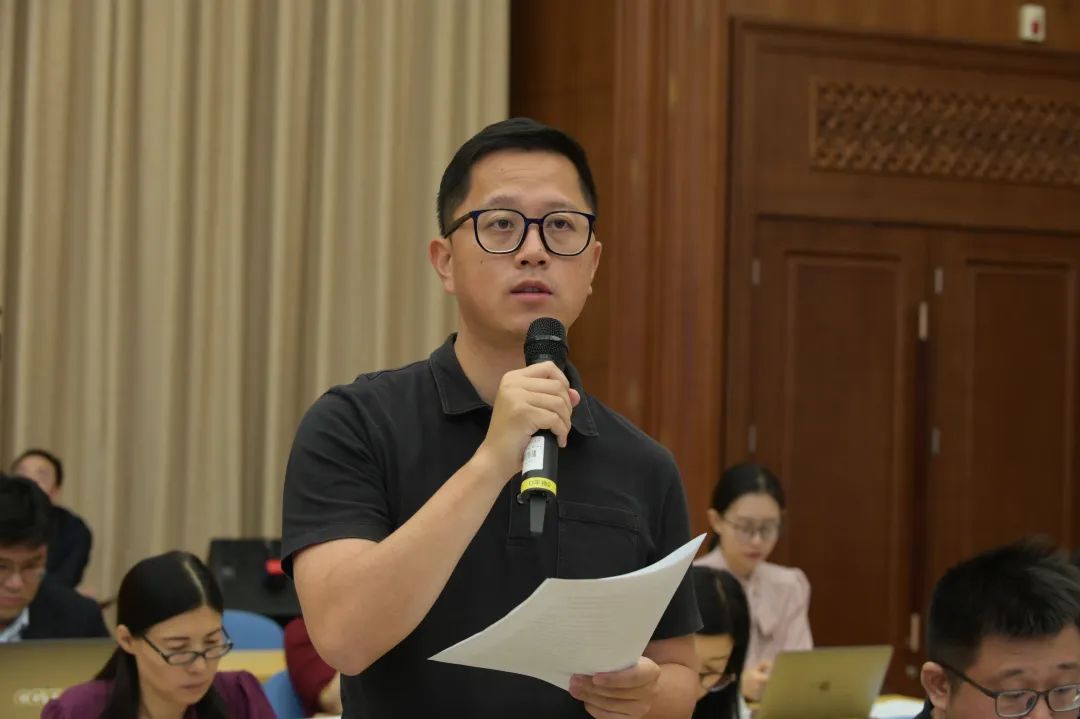
Cover reporter: The third round of the second batch of central ecological and environmental protection inspections has been launched recently. We found that these inspection targets are all located in the Yangtze River Basin. What kind of consideration is this based on? What innovations have been made in this inspection? How is the current progress?
Pei Xiaofei:Thank you for your question.
The Yangtze River is the mother river of the Chinese nation. It has nurtured generations of Chinese people and is also an important support for the development of the Chinese nation. The Yangtze River Economic Belt development strategy is a major strategic decision made by the Party Central Committee and is related to the overall development of the country. General Secretary Xi Jinping attaches great importance to it and has presided over four special symposiums on the development of the Yangtze River Economic Belt and delivered important speeches. He has visited provinces (cities) along the Yangtze River for many inspections and surveys to clarify the strategic positioning of the Yangtze River Economic Belt. Especially in October 2023, when General Secretary Xi Jinping presided over a symposium on further promoting the high-quality development of the Yangtze River Economic Belt, he emphasized that promoting the high-quality development of the Yangtze River Economic Belt fundamentally relies on the high-quality ecological environment in the Yangtze River Basin and requires high-level protection. Work harder.
Over the past eight years since the implementation of the Yangtze River Economic Belt development strategy, major achievements have been made in ecological and environmental protection and restoration, and the beautiful scenery of "one river with clear water flowing eastward" has reappeared. In 2023, the proportion of sections with excellent water quality in the Yangtze River Basin will reach 95.6%, a year-on-year increase of 1.1 percentage points. The water quality of the main stream will remain in Class II for four consecutive years. At present, ecological and environmental protection and high-quality development in the Yangtze River Basin are in a critical period from quantitative change to qualitative change. The results achieved are not yet stable. Objectively, there are still many difficulties and problems that need to be continued to be worked to solve them.
In accordance with the deployment of the Party Central Committee and the State Council, we have coordinated river basin inspections and provincial inspections in the third round of the second batch of central ecological and environmental protection inspections, as an important measure to implement the spirit of Xi Jinping Thought on Ecological Civilization and General Secretary Xi Jinping's important instructions., as a strong support for promoting the in-depth implementation of major regional strategies, as a vivid practice in promoting the construction of a beautiful China pioneer area, As a major innovation in adhering to the system concept and further promoting the central ecological and environmental protection inspection, through inspection, new progress has been made in promoting the high-quality development of the Yangtze River Economic Belt.
Among the inspections, we not only pay attention to the overall issues of the Yangtze River Economic Belt basin, such as policy convergence, regional coordination, and mechanism construction, but also pay attention to some common issues, such as shortcomings in environmental infrastructure, ecological damage, agricultural non-point source pollution, air pollution prevention and control, Illegal disposal of solid waste, especially construction waste, and "three phosphorus"(i.e. phosphate mines, phosphorus chemical enterprises, phosphogypsum warehouses) pollution, etc., while taking into account provincial differences in economic and social development, natural resource endowments, ecological security positioning, etc., and identifying outstanding problems in each province and city. From the perspective of inspection concepts, more attention is paid to collaborative governance of river basins and provinces; from the perspective of methods and methods, more attention is paid to discovering problems from the macro-meso level; and from the perspective of key areas, more attention is paid to promoting the resolution of systemic and universal problems throughout the basin.
At present, seven inspection teams have fully entered the sinking stage. Each inspection team actively accepts letters and reports from transferred people, goes deep into the front line and on-site, and verifies a number of outstanding ecological and environmental problems. Two batches of typical cases have been publicly exposed, effectively consolidating the ecological environment. Environmental protection "Party and government share the same responsibility" and "one post has two responsibilities". The majority of media friends have always cared about and supported the inspection work. Many reports related to inspections have aroused widespread response in the whole society. I would like to express my gratitude to you here. We will continue to disclose information in the future, and we welcome all media friends to continue to pay attention to the reports.
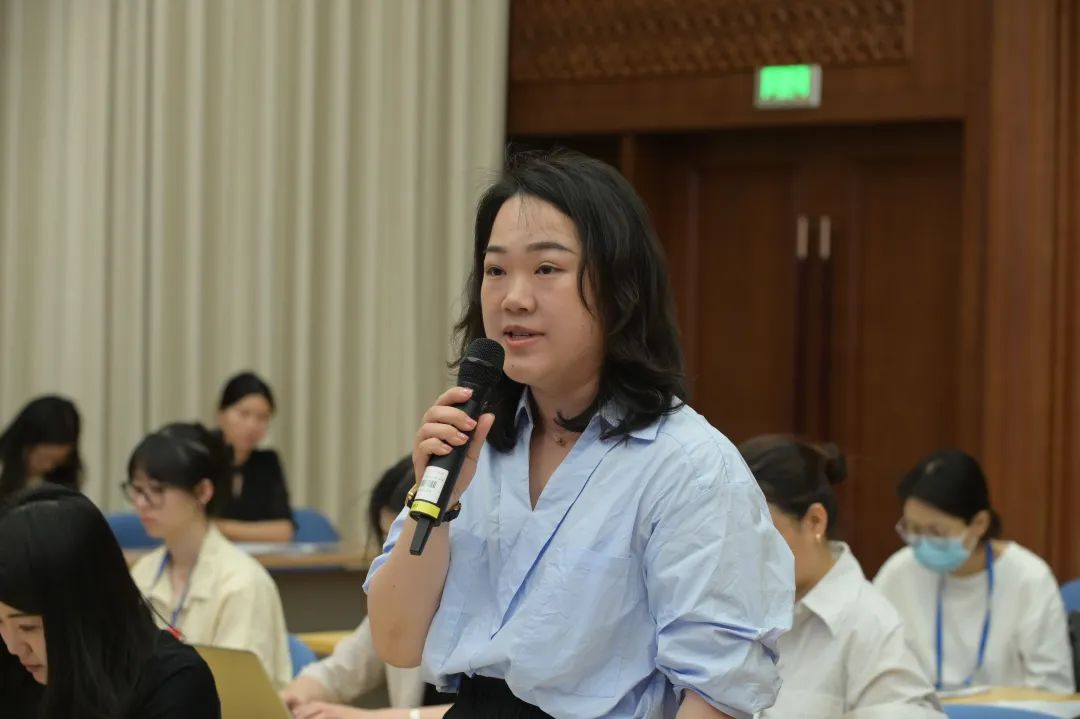
21st Century Business Herald: Recently, the Ministry of Ecology and Environment, the People's Bank of China and other four departments jointly held a symposium on green finance services for the construction of a beautiful China to study and deploy relevant work. What work has the Ministry of Ecology and Environment carried out in promoting green finance? What progress has been made?
Pei Xiaofei:Thank you for your question.
Green finance refers to economic activities that support environmental quality improvement, ecological protection and restoration, response to climate change, and efficient utilization of resources. Financial services provided by project investment, financing, project operations, and risks in the fields of environmental protection, energy conservation, clean energy, green transportation, green buildings, etc. There are many types of green financial products, including green loans, green bonds, green insurance, green funds, green trusts, carbon financial products, etc.
The Ministry of Ecology and Environment, together with the financial management department, will strive to do a good job in green finance and support and serve the construction of a beautiful China.
The first is to continuously improve green finance policy standards. In conjunction with relevant departments, we will issue the "Guiding Opinions on Further Strengthening Financial Support for Green and Low-Carbon Development" to support local development of green and low-carbon industries. Cooperate with relevant departments to carry out research and formulation and revision of green finance standards, and issue the "Guidance Catalogue for Green and Low-Carbon Transformation Industries (2024 Edition)", etc. Implement the reform of the legal environmental information disclosure system and environmental protection credit evaluation, strengthen corporate environmental protection responsibilities, and help the public supervise corporate environmental behavior.
The second is to steadily promote environmental rights transactions. Build and operate the world's largest carbon market and launch a national voluntary greenhouse gas emission reduction trading market. As of the end of April this year, the cumulative transaction volume of carbon emission quotas was 26.203 billion yuan, with a cumulative transaction volume of 457 million tons. Pilot emissions trading was carried out in 28 provinces, with a cumulative transaction volume exceeding 30 billion yuan.
The third is to initially establish a diversified investment and financing mechanism. A reserve bank of ecological and environmental protection financial support projects has been built. As of the end of March this year, 330 projects have been guided to be put into storage and pushed to financial institutions. The credit amount from financial institutions is approximately 210 billion yuan and loans are approximately 64 billion yuan. Cooperate with the People's Bank of China to establish carbon emission reduction support tools and provide low-cost funds to qualified financial institutions. Climate investment and financing pilots were carried out in 23 places, with a total credit of 455.384 billion yuan as of the end of 2023.
In the next step, the Ministry of Ecology and Environment will strengthen cooperation with the financial sector, promote the improvement of the environmental factor market and the green finance standard system, accelerate the improvement of policies and systems conducive to the development of green finance, study and establish a joint promotion mechanism for financial services to build Beautiful China, and help build people A beautiful China with harmonious coexistence with nature.
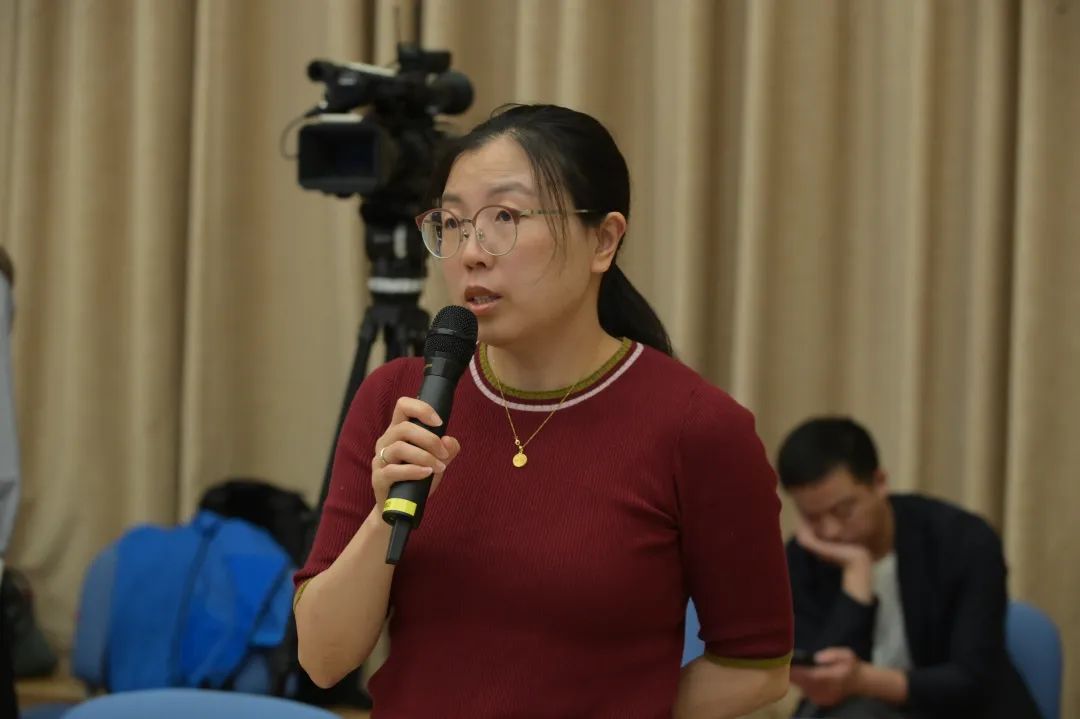
Xinhua Agency reporter: Carbon footprint is a hot word at home and abroad in recent years. Effective management of carbon footprint can help achieve the "double carbon" goal. What considerations and arrangements does the Ministry of Ecology and Environment have in carbon footprint management?
Pei Xiaofei:Thank you for your question.
Carbon footprint usually refers to the sum of greenhouse gas emissions and removals expressed in carbon dioxide equivalent for specific objects. Specific objects include products, individuals, households, institutions or enterprises. The more carbon-containing resources such as oil and coal are consumed, the greater the carbon dioxide emissions are. The larger the carbon footprint, and conversely, the smaller the carbon footprint. Product carbon footprint is the most widely used concept in carbon footprint. It refers to the entire life cycle of a product, including the total carbon emissions generated from the production, transportation, distribution, use to disposal of raw materials. It is a measure of production enterprises and products. An important indicator of green and low-carbon levels. For example, the production process of plastic bags requires a large amount of petroleum resources, and the use of plastic bags will increase the carbon footprint; solar water heaters use solar energy for heating and do not require the use of traditional energy sources and can reduce carbon emissions. The use of solar water heaters can reduce the carbon footprint.
In order to strengthen the management of carbon footprint, the Ministry of Ecology and Environment has compiled the "Implementation Plan on Establishing a Carbon Footprint Management System", which is planned to be jointly issued in the near future with other ministries and commissions. Starting from the carbon footprint of products, we will improve domestic rules, promote international connectivity, and establish a unified standard. Carbon footprint management system. There are mainly the following considerations and arrangements:
The first is to establish and improve a carbon footprint management system. Starting from basic work such as standards, factors, and institutional rules, we will promote the release of general principles for product carbon footprint accounting and key product carbon footprint accounting rules and standards, and establish and improve the product carbon footprint factor database and identification certification, hierarchical management, information disclosure and other systems.
The second is to build a work pattern with multi-party participation. Strengthen policy coordination, increase financial support, enrich and expand application scenarios for promoting product carbon footprints, encourage local pilots and policy innovations, promote enterprises in key industries to pilot, and form a joint effort to promote product carbon footprints and a work pattern of joint construction, sharing, and sharing.
The third is to promote international mutual trust in product carbon footprint rules. Track and judge the development trend of international carbon-related trade policies and product carbon footprint related rules, promote the international docking of product carbon footprint rules, exchange and mutual recognition of product carbon footprint rules with countries co-building the "Belt and Road", actively participate in the formulation of international standards and rules, and strengthen carbon footprint International exchanges and cooperation on work.
The fourth is to improve the level of product carbon footprint capacity building. Strengthen product carbon footprint accounting capabilities, standardize professional services, cultivate professional talent teams and institutions, and strengthen data quality, data security management, and intellectual property protection.
In the next step, the Ministry of Ecology and Environment will speed up the research and release of carbon footprint accounting methods and carbon footprint factors for key products such as electricity, coal, and fuel oil to provide a solid foundation for the carbon footprint accounting of downstream products throughout the life cycle,"all-round","full-chain" and "full-process" promote the refinement, implementation and implementation of carbon footprint work.
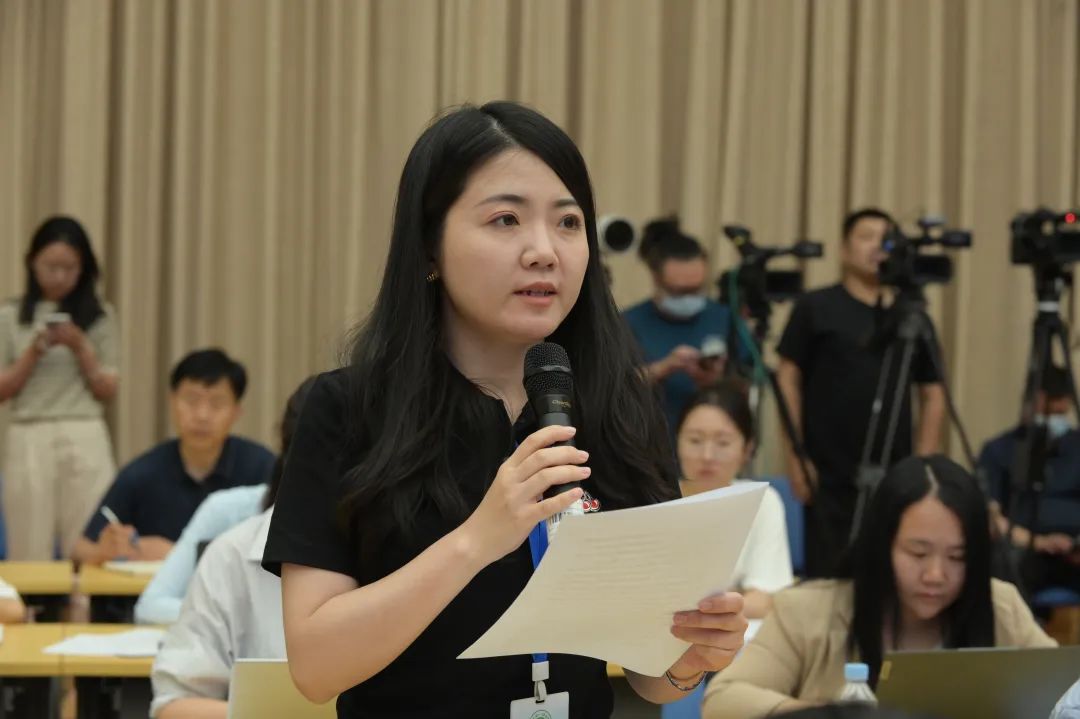
Poster Journalist: At the end of last year, the Central Committee of the Communist Party of China and the State Council issued the "Opinions on Comprehensively Promoting the Construction of a Beautiful China" to make systematic arrangements for comprehensively promoting the construction of a Beautiful China. What progress has been made in this work so far? What are the next steps?
Pei Xiaofei:Thank you for your question.
Building a beautiful China is an important goal of comprehensively building a modern socialist country and an important part of realizing the Chinese dream of the great rejuvenation of the Chinese nation. Since the issuance of the "Opinions of the Central Committee of the Communist Party of China and the State Council on Comprehensively Promoting the Construction of a Beautiful China", the Ministry of Ecology and Environment has made every effort to promote the implementation of various tasks. First, we will work with 44 departments to study and propose detailed implementation measures to form a task list, a policy measure list, and a division of responsibilities list. Currently, we are working with relevant departments to study and promote a sub-field action system to form a "1+N" implementation system with the construction of the Beautiful China Pilot Area as the overall starting point and supported by the actions of beautiful cities, beautiful villages, beautiful rivers and lakes, beautiful bays, as well as science and technology, and green finance. The second is to study and formulate an indicator system and assessment methods for the effectiveness of building a beautiful China, accelerate the construction of a modern ecological environment monitoring system, deepen the reform of systems and mechanisms in the ecological environment field, and promote the implementation of responsibilities for building a beautiful China. The third is to condense major scientific and technological needs, strengthen scientific research and the construction of high-end think tanks, and provide talent and technical support for the construction of a beautiful China.
The construction of a beautiful China is inseparable from the participation, support and actions of all over the world. At present, 31 provinces (autonomous regions and municipalities directly under the Central Government) across the country and the Xinjiang Production and Construction Corps are studying and formulating supporting documents related to local practices in building a beautiful China based on actual conditions. Among them, 10 provinces including Hebei, Shanxi, Inner Mongolia, Jilin, Heilongjiang, Shanghai, Shandong, Chongqing, Gansu, and Ningxia have been issued and implemented, and 3 provinces have been reviewed and approved by local party committees and governments. Various localities have actively carried out vivid practices in Beautiful China. For example, Zhejiang Province launched the "Top Ten Model Sites in Beautiful Zhejiang" activity; Fujian Province proposed to create a five-beauty system of "Beautiful City-Beautiful Countryside-Beautiful Rivers and Lakes-Beautiful Bay-Beautiful Park", and the experience of "Xiamen Practice" in Beautiful China has been promoted nationwide.
In the next step, we will actively cooperate with various departments to guide local governments to proceed from reality and strengthen the implementation and demonstration actions of the Opinions. We also hope that all sectors of society will take action to jointly promote the transformation of the grand blueprint for building a beautiful China step by step into a beautiful reality.







